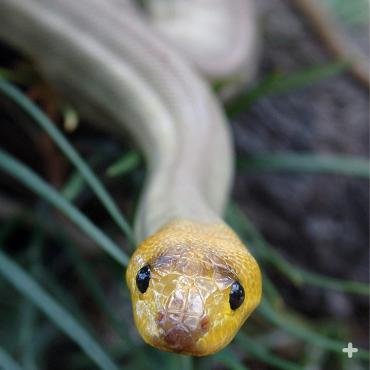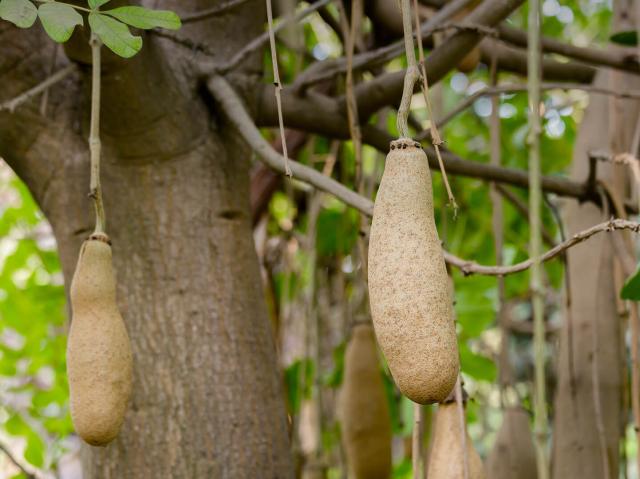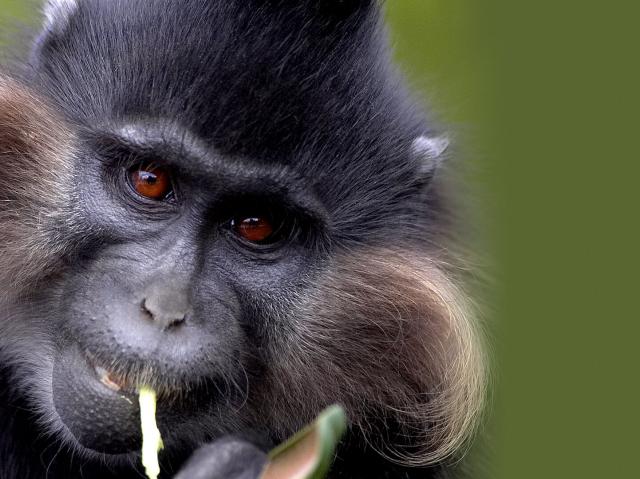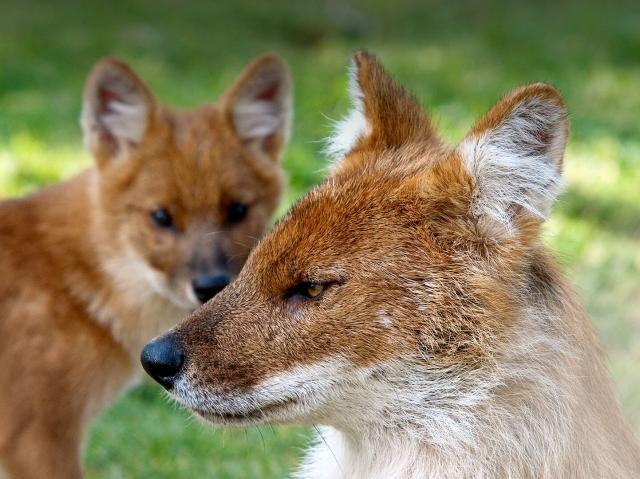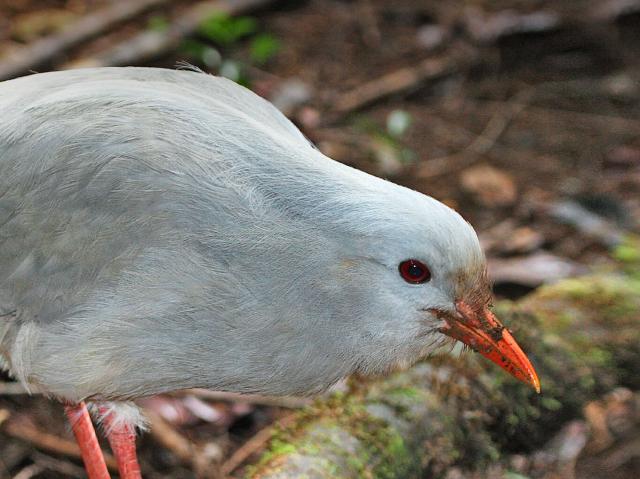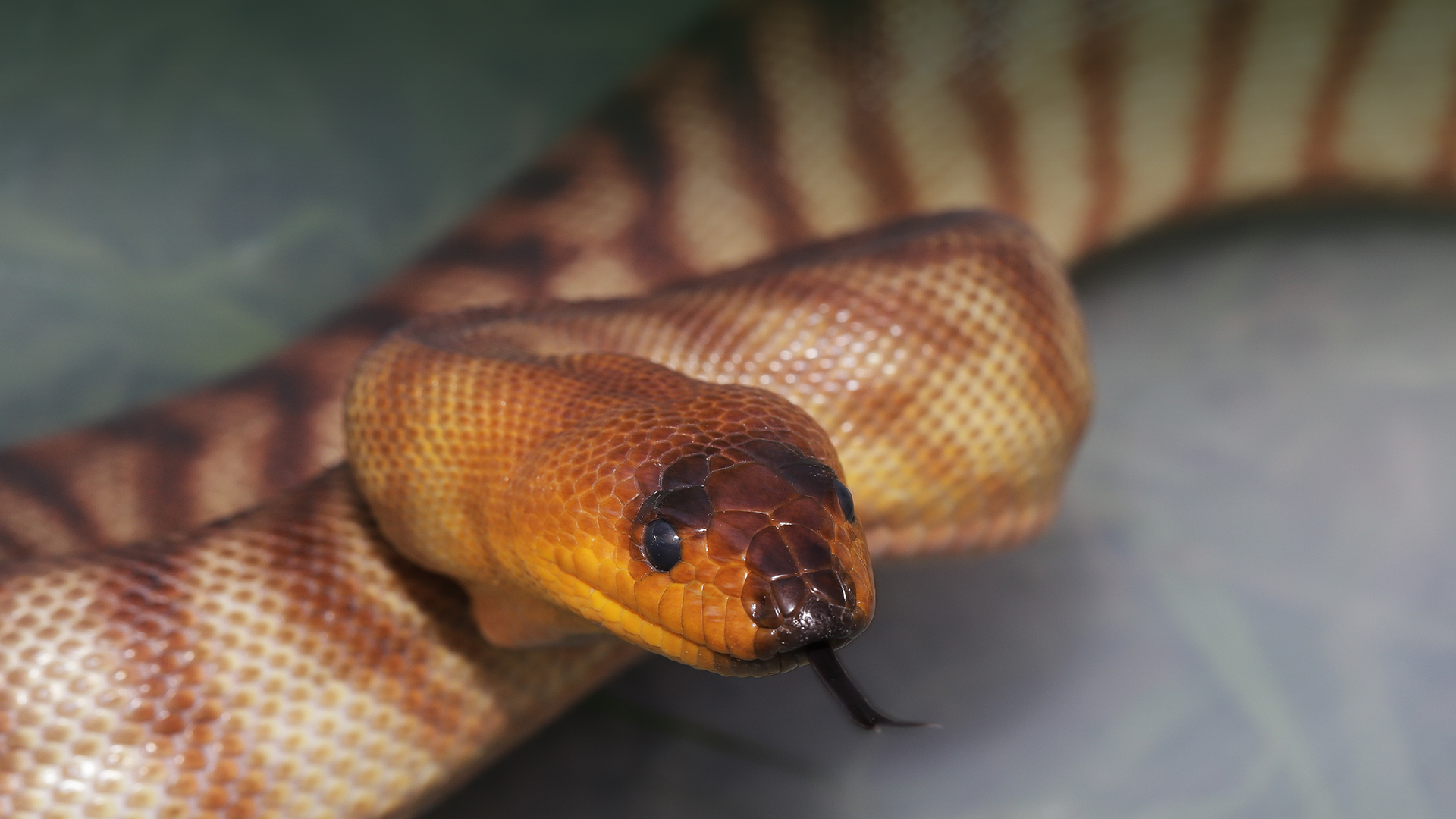
Woma Python

- Class: Reptilia
- Order: Squamata
- Family: Pythonidae
- Genus: Aspidites
- Species: ramsayi

ABOUT
Woma pythons are striking in appearance and highly skilled, nocturnal, ambush hunters. They are non-venomous, though they can be mistaken for the highly venomous western brown snake Pseudonaja nuchalis, also known as the gwardar.
They are efficient constrictors or squishers of prey. Should a prey item find itself in the woma’s burrow, there may not be enough room for it to properly wrap around and constrict the animal, so instead, the snake squishes it against the burrow walls. Hence, many womas have telltale scars on them from battling prey at close proximity.
The genus Aspidites is endemic to Australia. It includes two terrestrial python species: the black-headed python A. melanocephalus and the woma python A. ramsayi. They are characterized by the absence of teeth on the premaxilla (pair of small bones at the tip of the upper jaw), enlarged symmetrical shields on the top of its head, and the absence of heat-sensing pits on its face. The Aspidites genus is the sister taxon of all other living python species, but unlike other pythons, they often prey upon squamates, or scaled reptiles, hence their pitless status.
Banded on the run. Pythons are a bulky lot, as snakes go. Because of that, pythons scoot forward in a straight line (not the elegant sidewinding movement of other types of snakes). To achieve this “rectilinear progression” movement, they stiffen their ribs for support against the ground, lift their bellies, and push themselves forward. It’s slow going, rarely exceeding one mile per hour!
What woma pythons lack in speed, they make up for in dramatic looks. They are slender (by python standards), terrestrial snakes. Pythons as a group are non-venomous ambush predators, so where they live dictates their coloration. For the nocturnal woma, which inhabits shrublands, woodlands, and grasslands, a distinctive pattern of light and dark brown alternating bands down its body is effective camouflage. Coloration ranges from yellow to reddish, gray, or olive brown, with a creamy yellow underbelly.
Hot stuff. The two species in the genus Aspidites lack the heat-sensing pits along the lips and front of the head that other python species have, perhaps because so much of their diet is other (cold-blooded) reptiles. Instead, they sport an equivalent sensory organ on the tip of the snout bordering the mouth opening, in their rostral scales. Handy!
I see you. The woma has a narrow head and small eyes. Its body is broad and flattish in profile as its tail tapers into the skinny “lure” it uses to entice prey. It is smooth-scaled and has an orange head with dark scales around its eyes.
HABITAT AND DIET
Womas inhabit arid Australian forest, desert, shrubland, woodland, savanna and grasslands, preferably with sandy soil. Woma pythons hunker down in hollow logs and burrows by day, and hunt by night, though they occasionally may be seen basking during the day in mild weather.
That's using their head! If they need to expand their burrow, this snake may use its head (what else?) as a shovel to enlarge its digs. Hence, they prefer areas with sandy soil to make digging easier.
Python in a pinch. Foxes, mulga snakes, and feral cats may prey on woma pythons. Predation by mulgas have made reintroduction projects moot, as they consume the young pythons before they can breed.
Dinner dance. These snakes consume mainly small reptiles, as well as mammals, birds, and bird eggs. They are nocturnal hunters. Womas have a narrow, pointed tail, which they wiggle to attract prey while the rest of its body is stock-still, poised to pounce. According to the Australian Reptile Park, once an animal falls for its ruse, the python coils its body around the animal to kill it by constriction, or it squashes the prey against the walls of its burrow. Ouch!
The woma is a carnivore that can even consume venomous snakes, as it is immune to snake venom.
FAMILY LIFE
Eggs-citing life. Breeding occurs between May and August. The female lays a clutch of 5 to 19 eggs in her burrow, where she will curl around them for the next two months to keep them warm. Should the temperature drop, she will shiver to warm up her eggs. Once they hatch, the youngsters are independent.
CONSERVATION
Name it. This snake is also known as Ramsay’s python or sand python. Assessed in 2017, the woma python is listed on the International Union for Conservation of Nature (IUCN) Red List of Threatened Species as a species of Least Concern due to its extensive range. But some populations have declined significantly over the past several years, and it is considered critically endangered in some parts of its range.
The woma python's main threats include habitat loss (especially clearing of land for agriculture) and predation by feral animals like foxes and cats. It has been noted that in southwest Australia, many woma populations have become critically endangered and have not been seen since the late 1980s.
Additionally, woma pythons are preyed upon by the king brown snake Pseudechis australis, also called the mulga snake, to the detriment of woma reintroduction efforts by the Adelaide Zoo. The introduced woma offspring are killed by the venomous mulga snakes before the pythons can reach maturity and are able to breed.
By supporting San Diego Zoo Wildlife Alliance, you are our ally in saving and protecting wildlife worldwide.
Life Span
20 years or more
Young
5 to 20 eggs per clutch
Size
Length: Up to 8.5 feet (2.6 meters); average about 4.5 feet (1.5 meters)
Weight: 2.2 to 11 pounds (1 to 5 kilograms)
Fun Facts
This species is also called a sand python or Ramsay’s python, in honor of Australian zoologist Edward Pierson Ramsay.
The genus name Aspidites translates to “shield bearer,” in reference to their symmetrical head scales.
Woma pythons are popular pets in Australia and around the world. They are docile in nature and voracious eaters.
All of the roughly 40 species (according to the Reptile Database) in 9 genera of pythons (Pythonidae) are oviparous (egg laying) and restricted to equatorial Africa, Asia, and Australasia.
While both pythons and boas are large constrictors, they make up different taxonomic families.
The woma’s signature stripes may fade with age.
The reticulated python is the largest, reaching 30 feet (9 meters) in length, while the smallest is the anthill python, reaching 2 feet (61 centimeters) in length.


